
"No man can be a genius in slapshoes and a flat hat." -Buster Keaton -

"No man can be a genius in slapshoes and a flat hat." -Buster Keaton -
After waking up from a wild dream, a theater stagehand inadvertently causes chaos everywhere he works. “The Playhouse” is a 1921 American two-reel silent comedy film written, directed by, and starring Buster Keaton. The 22-minute film is best known for its opening sequence, where Keaton plays every role.
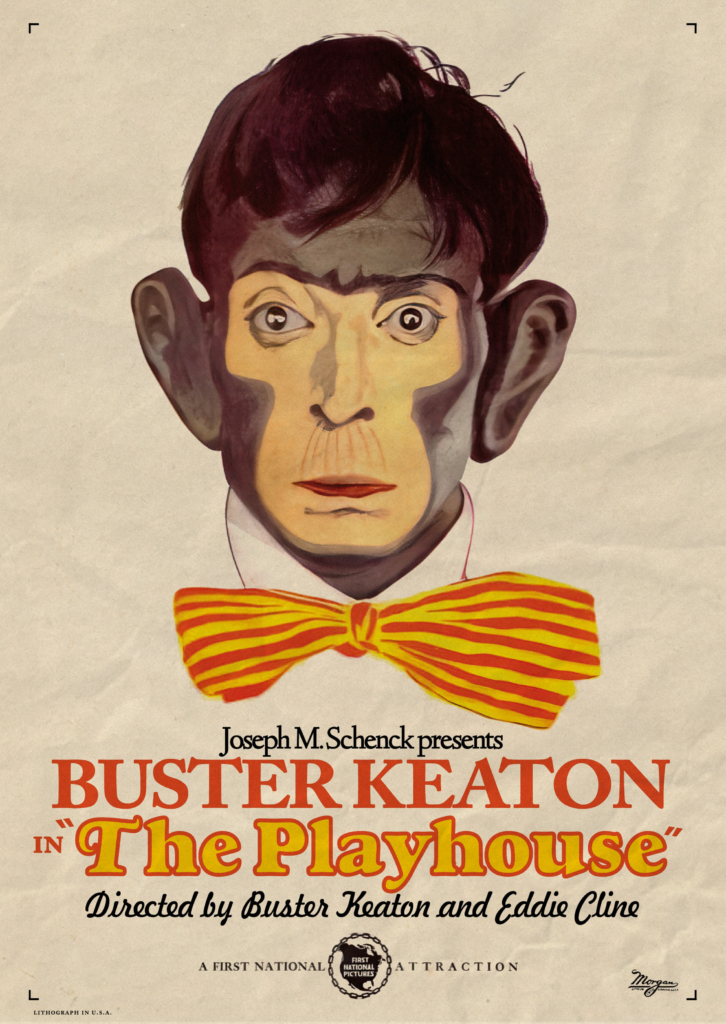
In this movie, Buster Keaton’s stunts are milder than his usual rugged and demanding performances because he was recovering from a broken ankle.
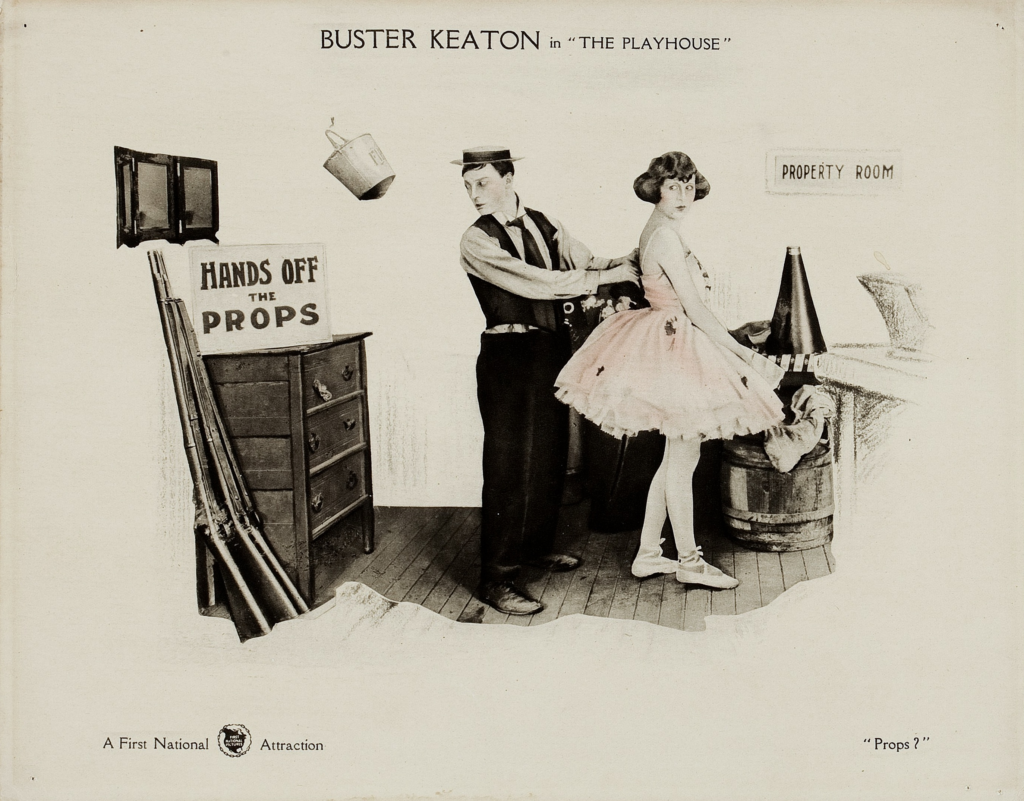
Buster Keaton employed a hand double for the scene where he writes to conceal the missing tip of his right index finger. Below is the scene where you can see that is not buster’s right hand.
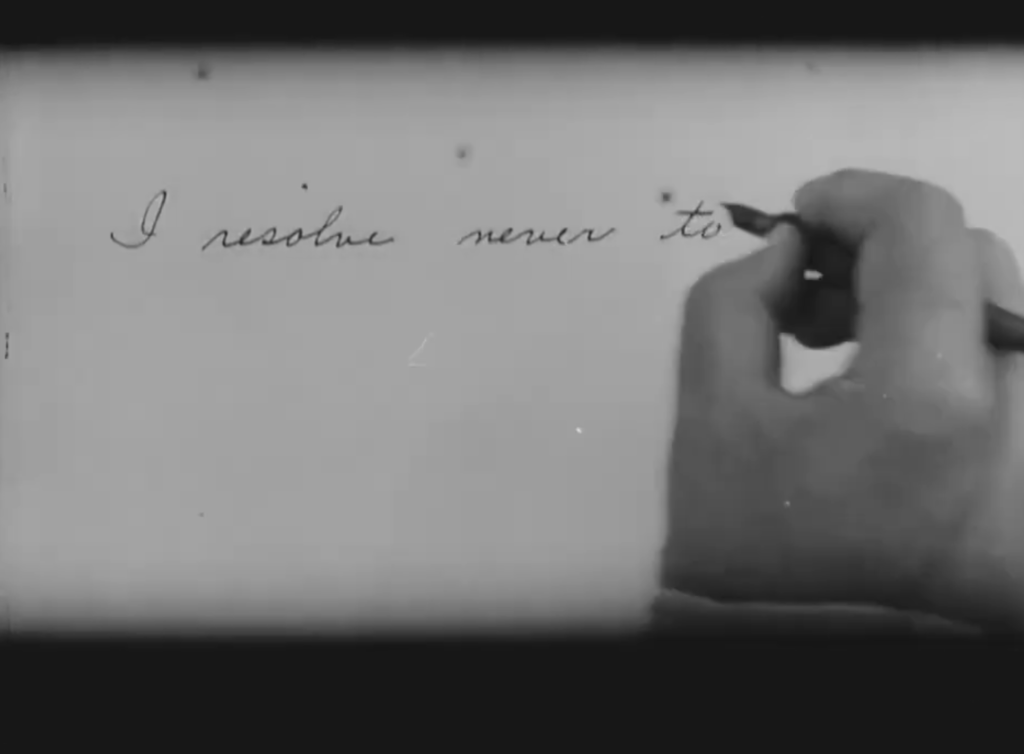
Additionally, if you’re curious, you can see Buster’s actual right hand in a photo from his posing for “The High Sign” (1921).

In this short film, Buster Keaton credited himself for every role, including editor, director, writer, and cameraman. This was a reference to Thomas H. Ince, the “inventor” of the Western, who was known for taking credit for all aspects of his productions.
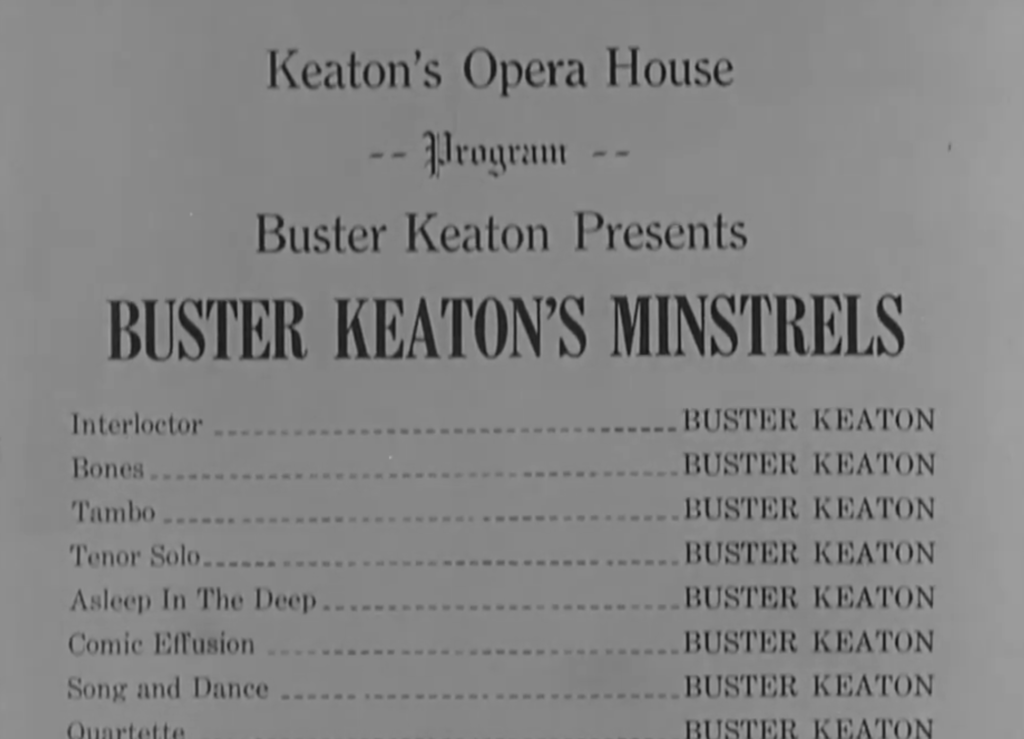
Keaton’s portrayal of nine members of a minstrel show required a special matte box placed in front of the camera lens, featuring nine precisely machined strips of metal that could be moved independently.
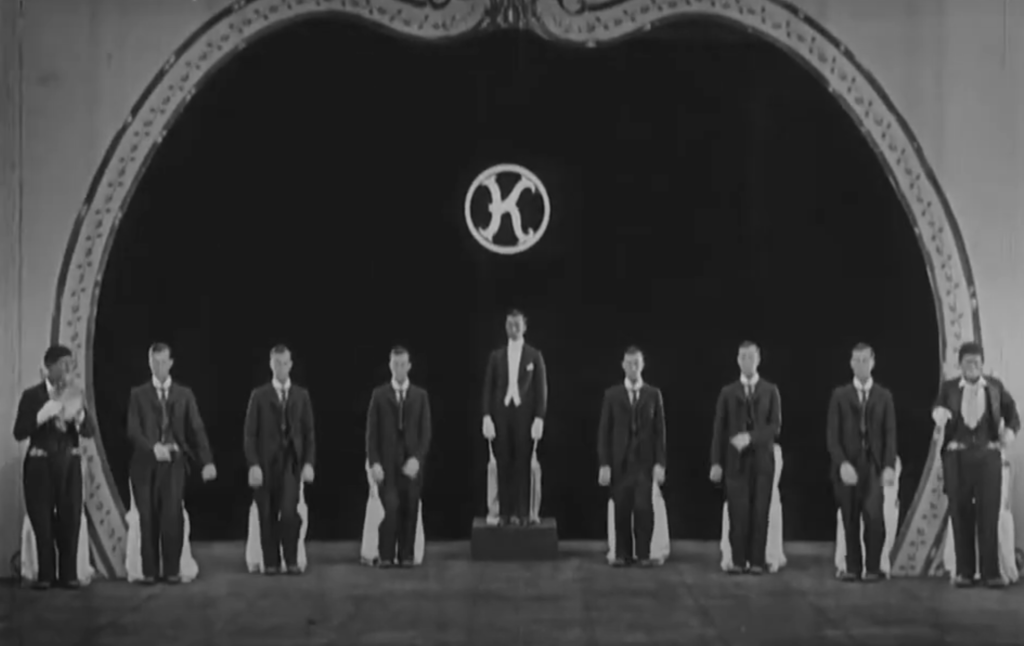
Elgin Lessley, Keaton’s cameraman, started by shooting the far-left Keaton with only the first shutter open and the others closed. He then rewound the film, opened the second shutter, and filmed the next Keaton. This process was repeated seven more times. Since the camera was hand-cranked, Lessley had to maintain an absolutely steady hand to avoid any variation in speed. Keaton synchronized his movements for each character’s dance to the music of a banjo player accompanied by a metronome, which was manageable in a silent film. It took decades for Keaton, who devised this technique, to reveal his method to other filmmakers.
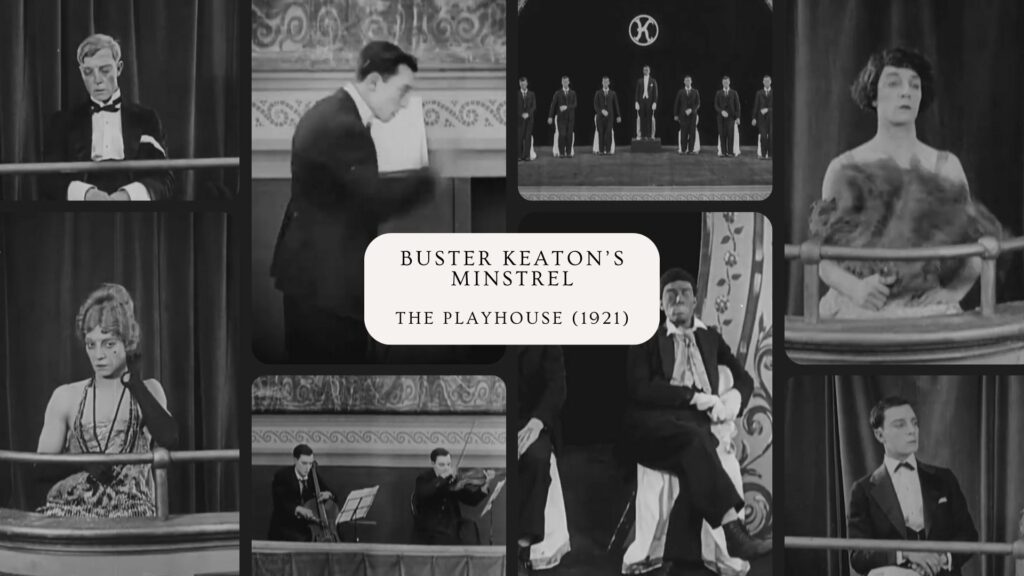
According to Elenor Keaton in the book “Buster Keaton Remembered,” the film “The Playhouse” (1921) features gags from Keaton’s vaudeville career with The Three Keatons and draws inspiration from Annette Kellerman’s performances, where she used 100 mirrors to create the illusion of multiple versions of herself. Although Keaton played all the roles in the first scene, he had considered doing so for the entire film. However, he decided against it, fearing that audiences might tire of the joke or perceive it as merely a display of his acting skills. He later regretted not taking on all the roles throughout the film.
Watch the full film by pressing the play button below:
The film starts with a dream where Buster Keaton plays every role in a minstrel show. He appears as all the performers on stage, the entire orchestra, the audience, and even the stagehand. The highlight is a dance routine featuring nine Keatons performing simultaneously, achieved through innovative filming techniques.
Buster’s character then wakes up from this wild dream and finds himself working as a stagehand in a real theater. As he goes about his duties, he inadvertently causes chaos everywhere. His attempts to help out lead to a series of comical mishaps, including knocking over props and mismanaging stage effects, which creates confusion among the cast and crew.
A recurring gag involves mistaken identity with a pair of identical twins played by Virginia Fox. Buster interacts with each twin separately, unaware they are not the same person, leading to humorous misunderstandings.
The film features scenes of various theater performances, including slapstick comedy acts and vaudeville routines, all disrupted by Buster’s antics. Despite his well-meaning efforts, his actions often result in more problems, frustrating the other performers and the stage manager, played by Joe Roberts.
In the end of the film, Buster’s character ends up on stage performing in front of a live audience. Despite his nervousness and the chaos leading up to this moment, he delivers a captivating performance. His natural talent for physical comedy and improvisation wins over the audience. The film concludes with Buster’s character waking up again, revealing that much of the previous chaos was another dream. This cyclical structure adds to the surreal and comedic nature of the film.